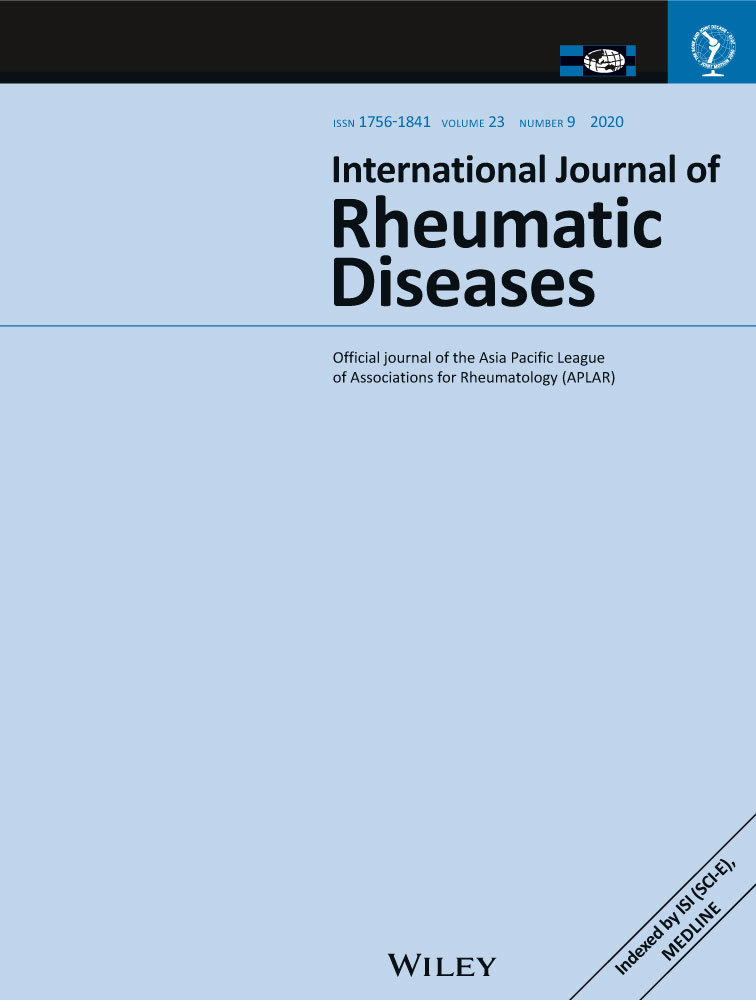Association of obesity with inflammation, disease severity and cardiovascular risk factors among patients with ankylosing spondylitis
Funding information
This study was supported by grants from Taipei Tzu Chi Hospital, Buddhist Tzu Chi Medical Foundation (TCRD-TPE-105-31), Taiwan.
Abstract
Aim
To investigate total and central obesity in ankylosing spondylitis (AS), and assess the association with inflammation, disease severity and cardiovascular risk factors.
Methods
There were 105 AS patients enrolled. Anthropometry was measured to determine total (body mass index [BMI]) and central obesity (waist circumference [WC], waist-to-height ratio [WHtR]). We evaluated patients’ disease activity, functional ability, global assessment, physical mobility, radiographic damage and health index. Erythrocyte sedimentation rate, C-reactive protein (CRP) and blood biochemistry profile were tested. Retrospective radiographic change was assessed in 39 patients. Presence of diabetes and hypertension were examined.
Results
The obese AS patients had higher inflammation (CRP), disease activity (Ankylosing Spondylitis Disease Activity Score [ASDAS] - CRP), physical mobility (Bath Ankylosing Spondylitis Metrology Index [BASMI]), radiographic damage (modified Stoke Ankylosing Spondylitis Spinal Score [m-SASSS]), liver function and blood pressure (all P < .05). Obesity (BMI, WC, WHtR) positively correlated with inflammation (CRP), physical mobility (BASMI), radiographic damage (m-SASSS), health index (Assessment of SpondyloArthritis International Society Health Index), liver function and blood pressure (all P < .05). Moreover, presence of central obesity (WC, WHtR) had correlation with disease activity (ASDAS-CRP) (r = .218, P = .027; r = .221, P = .025), and predicted longitudinal radiographic change (m-SASSS) (standard coefficient = 0.300, P = .041; standard coefficient = 0.288, P = .045). Importantly, central obesity was better in predicting high inflammation, disease activity, physical mobility, radiographic damage and health index in AS, and WHtR was the best for predicting m-SASSS (area under the curve = 0.734, P < .001). Obesity was associated with increased risk of diabetes and hypertension in AS.
Conclusion
Obesity was associated with higher inflammation, disease activity, physical mobility, radiographic damage, health index, liver function and cardiovascular risk factors in AS. Central obesity could predict a patient's longitudinal radiographic change. Central obesity is a useful predictor for high disease severity in AS.
CONFLICT OF INTEREST
The authors have declared no conflicts of interest.




